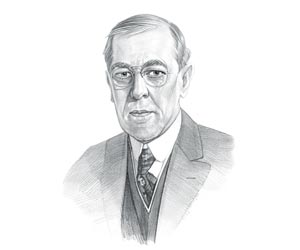|
|
|
|
|
Information in the form of propaganda was provided by the Committee on Public Information (CPI) and used in many different forms such as posters, pamphlets, magazines, billboards, movies, photographs, public speakers called the "Four Minute Men" and daily press releases to shape public opinion to build support for the war. The Committee on Public Information (CPI), aka the Creel Committee, was also tasked with censorship of potentially damaging material.
Committee on Public Information Facts: Fast Fact Sheet
for kids
What was the Purpose of the Committee on Public Information?
Who was the leader of the Committee on Public Information?
Why was the Committee on Public Information
formed?
What was the role of the Committee on Public
Information? Facts about
Committee on Public Information (CPI) During WW1, national governments employed propaganda on an unprecedented scale. The arrival of the modern mass media, with its ability to reach millions of people rapidly, made propaganda an indispensable element of wartime mobilization - refer to WW1 Mobilization. The absence of public unity was a major concern when America entered the war. Just one week after the United States entered the war on April 6, 1917, the CPI was created on April 13, 1917. The journalist George Creel (1876-1953), a firm supporter of Woodrow Wilson during presidential election campaigns, was chosen to head the U.S. propaganda effort during World War One. George Creel believed in the power of the press and that its effectiveness should not be underestimated The CPI blended modern advertising techniques with human psychology to produce propaganda on a large scale. The commission comprised of 19 subdivisions, each devoted to a specific type of propaganda The Creel Commission organized the "Four Minute Men," volunteers who made patriotic speeches for four minutes in public locations, functions and schools. 75,000 speakers volunteered as "Four Minute Men" delivered total of 755,190 speeches in thousands of American communities The Creel Commission used propaganda techniques and communication vehicles to create anger and fear among American citizens to illustrate how terrible life would be if America and its allies lost the war to the Germans. The Creel Commission used various mediums including leaflets, movies, photographs, cartoons, pamphlets, booklets, magazines, posters, press releases and billboards to promote its messages. The Creel Commission bombarded foreign media outlets with news, official statements, and features on American life and the war effort. Several hundred volunteer translators helped the CPI with this task. 1,439 drawings were prepared by CPI volunteers for the production of posters, window cards and and signboards. The free CPI daily newspaper, called the "Official Bulletin" consisted of at least 8 pages and had a 100,000 circulation to post offices, army bases and other newspapers The CPI Division of films used newsreels and 'shorts' to promote the war Movies were extremely popular in America and highly effective abroad. Hollywood played its part in propaganda.
Seventy-five million copies of pamphlets were circulated in America The Creel Commission secured millions of dollars worth of free advertising space from the Press. Propaganda Techniques were employed by the CPI including:
On an average week, more than 20,000 newspapers carried information provided through CPI propaganda. Songs and Music was a prominent feature at home fronts and on the battlefields and were used as a great medium for conveying messages George Creel entitled his 1921 memoir of his CPI tenure as "How We Advertised America". The Committee on Public Information was in operation for just over 28 months and was formally disestablished by an act of Congress on June 30, 1919 |
| US American History |
| 1913-1928: WW1 & Prohibition |
|
|
|
|
|
First Published2016-04-19 | |||
|
Updated 2018-01-01 |
Publisher
Siteseen Limited
| ||
|
|

